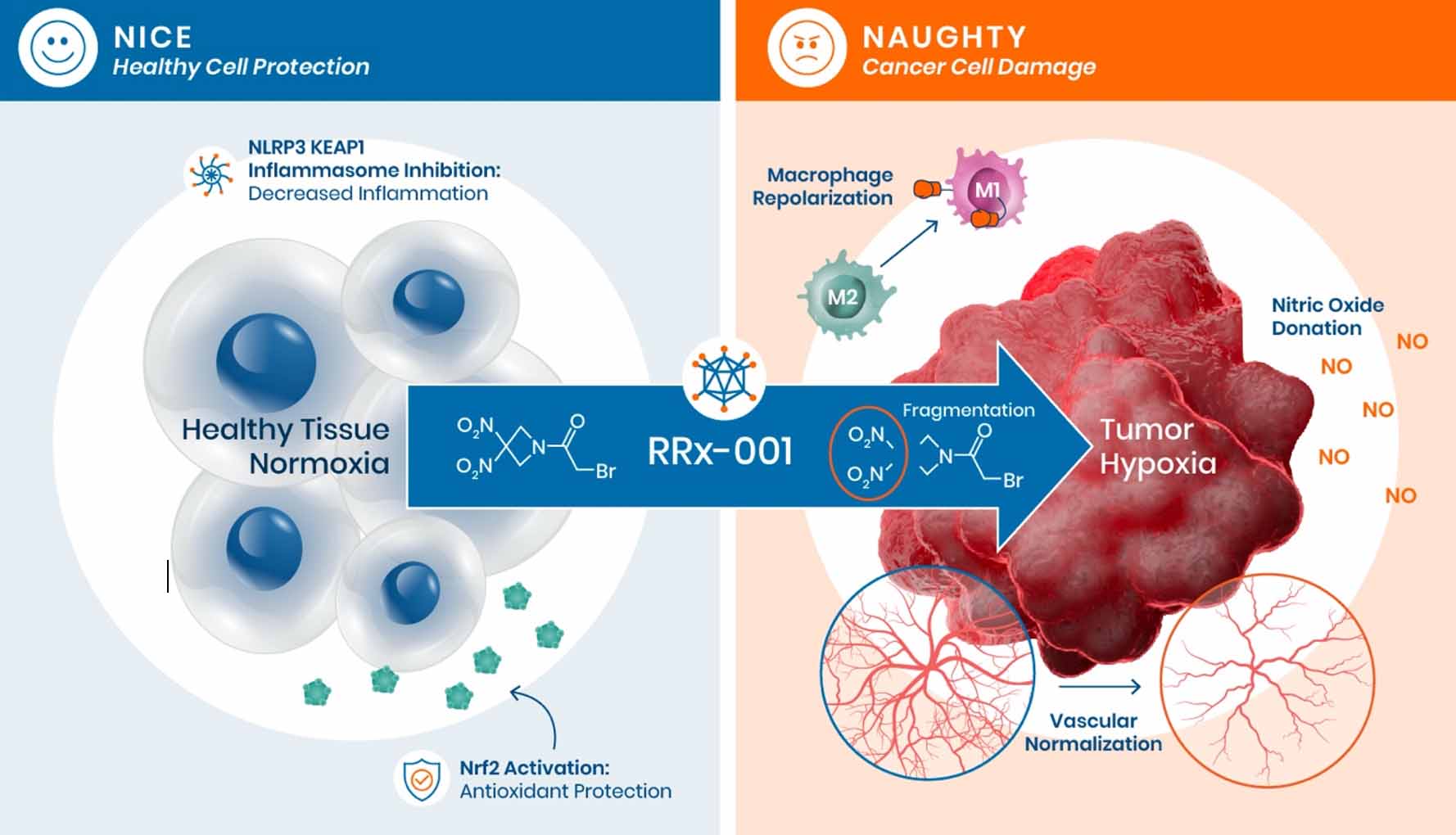It may seem belated to ask, given that we are now in February, but for Christmas, were you naughty or nice?
For the small molecule, RRx-001, the answer was (and is) both.
Under inflammatory and low oxygen or hypoxic conditions, which are present almost exclusively in tumors, RRx-001 is appropriately naughty. In other words, it metabolizes to highly toxic species, including the vasodilator nitric oxide, which kill tumor cells, polarize tumor-associated macrophages (TAMs), and improve tumor blood flow. TAM polarization refers to the fact that after treatment with RRx-001, these macrophages change their polarization or “gang affiliation” from M2 macrophages, which serve as “enforcers”, “bodyguards”, and mayhem-makers for tumors to M1 macrophages, which turn on tumors and attack them, as they are supposed to do. Improved tumor blood flow and oxygenation occur because RRx-001 prunes the misshapen, crowded, overgrown tumor vessels, which otherwise impede the passage of blood in tumors, leading to pooling, stagnation, and poor oxygenation.
However, under conditions of normal oxygen (normoxia) and minimal inflammation, RRx-001 is ‘twice as nice’. In other words, it acts as an antioxidant/anti-inflammatory agent for healthy tissues through a double effect—direct inhibition of the NLRP3 inflammasome and activation of Nrf2. The NLRP3 inflammasome is a collection of proteins that turns on and maintains the inflammatory response. Nrf2 controls the production of hundreds and hundreds of antioxidant and protective genes. See Figure 1 below.
Figure 1: RRx-001 is an anti-inflammatory/antioxidant for normal tissues (nice) and toxic to tumors (naughty)

This naughty/twice as nice contrast explains how RRx-001 acts simultaneously as 1) an anticancer agent, which is used in combination with radiotherapy and chemotherapy to shrink tumors and improve blood flow, and 2) as a treatment for inflammatory conditions like Parkinson’s disease, amyotrophic lateral sclerosis/motor neuron disease (ALS/MND), and radiation-related toxicity. In addition, for conditions where low oxygen conditions predominate such as heart disease, peripheral artery disease, pulmonary hypertension, and hemorrhagic shock, RRx-001 releases nitric oxide to widen or dilate blood vessels and improve oxygenation, which is extremely helpful.
Christmas is over, of course, and 2022 is already in the rearview mirror for most of us. Nevertheless, as Valentine’s Day approaches, our heartfelt hope and desire are that RRx-001 will be the gift that gives year-round in 2023 and beyond to patients with diseases of high unmet medical need where therapeutic options are either few and far between or absent altogether.
